SaaS Growth Journey: Key Takeaways from a Scaling Success Story
Discover how Otto - a SaaS company offering banking software uses product-led growth and AI-driven marketing to improve customer acquisition, retention, and expansion.



How Otto Scaled Smarter with Product-Led Growth and AI-Driven Insights?
Otto is a SaaS company offering banking software to small businesses and mid-market clients. With a hybrid go-to-market motion that combines product-led growth (PLG) and sales-assisted expansion, Otto has successfully turned data-driven insights into sustainable growth.
But like many scaling SaaS companies, Otto faced challenges balancing acquisition costs, retention rates, and expansion opportunities. The company’s growth story is more than data and funnels. It’s about how an AI-powered co-marketer, powered by Intempt GrowthOS, helped Otto unify data, predict user intent, and deliver personalized experiences across the customer lifecycle.
The Challenge: Balancing CAC With Sustainable Growth
Otto’s business model was solid. With clear pricing tiers (Free, Professional, Enterprise) and a healthy MRR of $833. However, their biggest challenge was reducing Customer Acquisition Cost (CAC) and achieving faster CAC payback.
In The Beginning:
- CAC: ~$6,111 for a $10K deal
- CAC Payback: 7.3 months
- Goal: 5–6 month payback and 100 - 110% Net Dollar Retention (NDR)
With 80% of deals marketing-sourced and 20% sales-sourced, Otto’s funnel metrics were decent but not yet optimized for compounding growth.
Conversion Metrics Before Optimization:
- MQL to SQL: 25%
- SQL to Opportunity: 50%
- Opportunity to Closed Won: 20%
They needed a more efficient, data-connected system to improve conversions, retain users, and increase expansion revenue, all while keeping costs in check.
Overall, Otto’s median Monthly Recurring Revenue (MRR) is $833. The company operates a hybrid go-to-market motion (product-led + sales-expanded) and has 3 tiers - Free, Professional, and Enterprise.

Key Metrics and Revenue Fundamentals
Otto’s revenue model is based on specific, measurable goals. Here are the critical numbers:
Initial Annual Contract Value (ACV) Target:
- $10K per year, equivalent to $833 per month (MRR).
Sales Source Breakdown:
- 20% of deals are sales-sourced
- 80% are marketing-sourced
Funnel Conversion Rates:
- MQL to SQL: 25%
- SQL to Opportunity: 50%
- Opportunity to Closed Won: 20%
Deal Cycle and Cost Details:
- 80% of deals close within the same quarter.
- Cost per MQL: $69
Pipeline Investment:
- An investment of roughly $330,000 is needed to generate $539,784 in the pipeline.
Customer Acquisition Cost (CAC):
- For a $10K deal, CAC is around $6,111.
- It currently takes 7.3 months to recover this cost, with a target to reduce it to 5 months.
The Approach: Creating a Unified Growth Engine
Otto realized that optimizing growth required more than isolated campaigns; it needed a unified system connecting data, marketing, and sales in real time.
That’s where Intempt GrowthOS came in, not just as a tool but as an AI-powered growth methodology designed to help SaaS companies scale smarter.
The team focused on the following pillars:
Acquisition
The primary goal for acquisition is to reduce the Customer Acquisition Cost (CAC) and shorten the payback period to 5 months. This involves:
Controlling Costs: Keeping a close eye on the expenses related to qualified leads (PQL, MQL, SQL) and each stage of the funnel.
Boosting Free-to-Paid Conversions:
- Running A/B tests to optimize messaging and user experience.
- Personalizing the onboarding journey to improve conversion rates.

Retention & Monetization
Retaining customers and growing revenue from them were equally important. The focus was on:
Net Dollar Retention:
- For every $1 of current MRR, the aim is to have it grow to $1.10 or more over time.
Monitoring Key Metrics:
- MRR Churn: Track the monthly loss of recurring revenue.
- Expansion Revenue: Measure additional income from upselling existing customers.
Both reducing churn and increasing expansion revenue are essential for long-term profitability.

Implementation: Inside Otto’s Growth Flywheel
Step 1: Discover Audiences
Otto began by connecting all their customer data sources into a single view using GrowthOS’s data integrations and identity resolution. This gave them a unified customer profile, allowing them to:
- Discover: Unify customer data from all channels and analyze it to build target audiences.
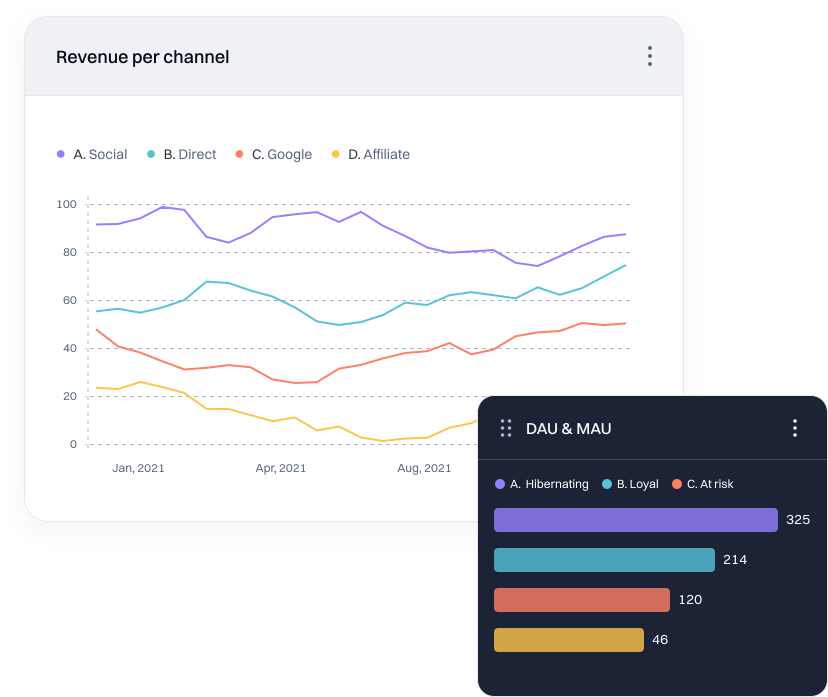
- Predict: Use machine learning to predict user intent in real-time.
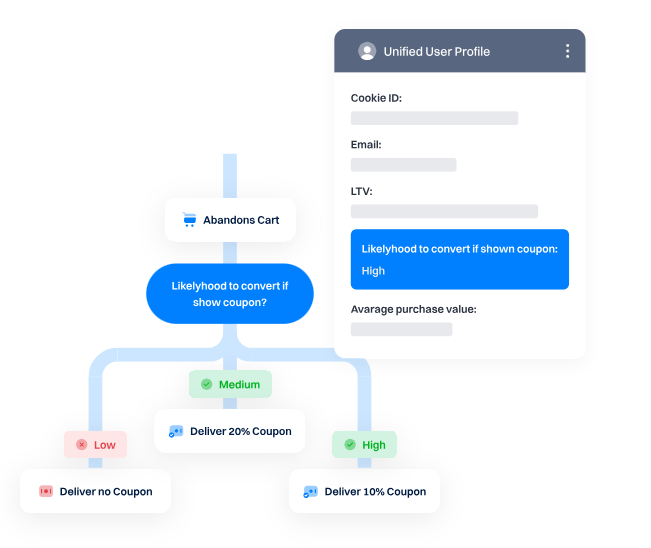
This unified view helped the sales team know exactly when to step in for conversion, reducing manual guesswork and improving lead quality.
Step 2: Engage Customers
Once they had clear insights into user intent, Otto moved to personalize the journey for every user segment.
They focused on:
- Personalization: Personalize interactions across web, mobile, and customer journeys.
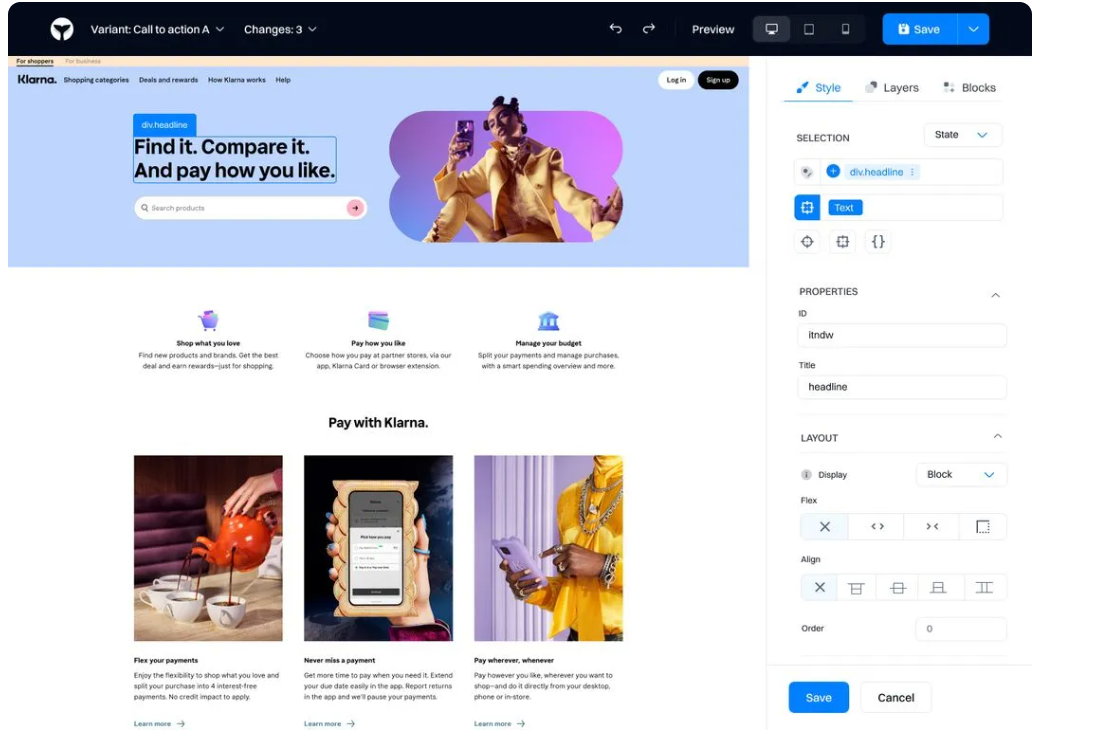
- Engage: Set up automated triggers to engage customers when they show signs of inactivity or when their lifecycle stage changes.
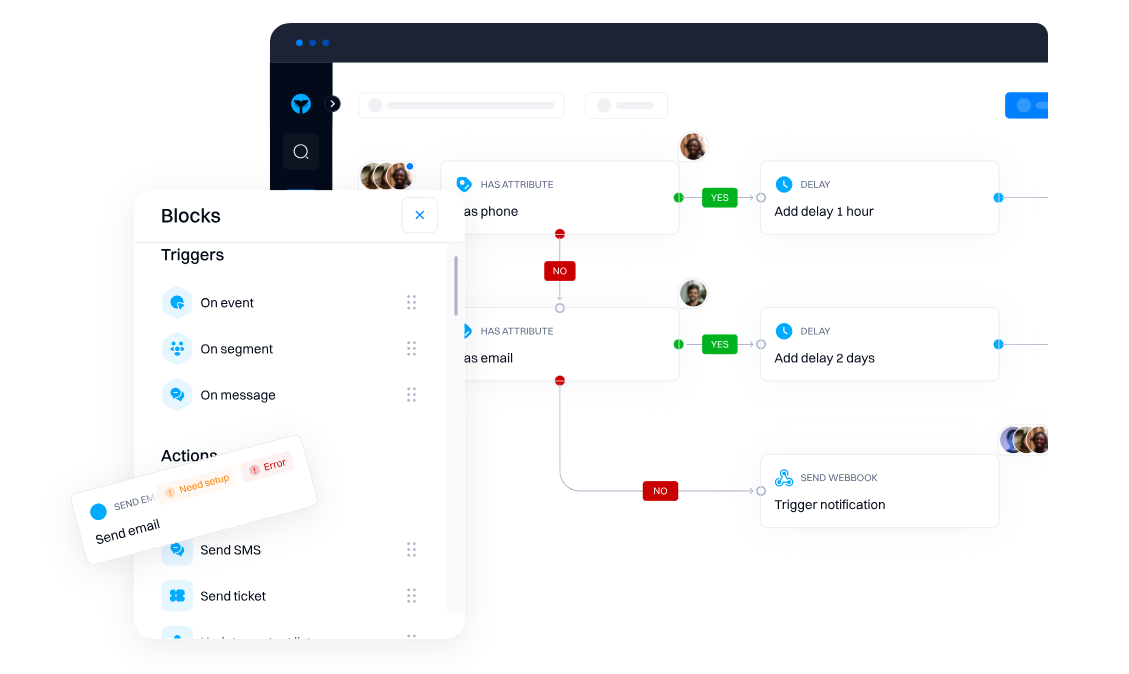
This ensured that customers received the right message at the right time, improving both satisfaction and conversion velocity.
Step 3: Optimize Experiences
Otto didn’t stop at engagement; they used GrowthOS to experiment, measure, and iterate continuously.
- Experiments: Experiment with different approaches on your digital platforms.
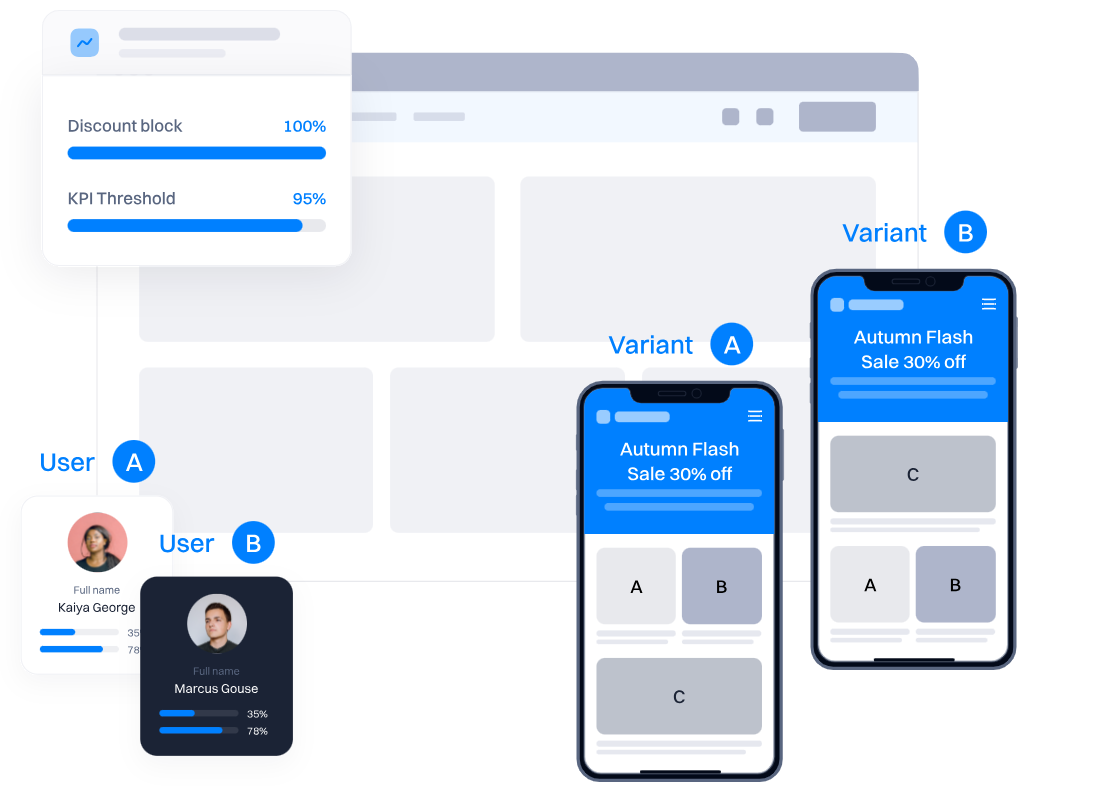
- Analytics: Use real-time data to refine and improve customer interactions.
This ongoing process helped Otto identify what worked, scale it fast, and sunset what didn’t, making growth an iterative, data-backed process.
Key Takeaways
- Focus on CAC Efficiency: Optimize your funnel through targeted A/B tests and personalized onboarding.
- Prioritize Retention: Keep churn low while increasing expansion revenue for sustainable MRR growth.
- Adopt a Unified System: Tools like Intempt GrowthOS eliminate data silos and manual reporting, enabling smarter, faster growth loops.
- Experiment Relentlessly: Continuous testing and optimization turn insights into compounding gains.
TL;DR
- Otto, a SaaS company offering banking software, used a hybrid PLG + sales model to drive growth.
- Their main challenge was reducing a 7.3-month CAC payback and improving Net Dollar Retention (NDR).
- By adopting Intempt GrowthOS, Otto unified customer data and automated engagement across the funnel.
- Personalized onboarding, predictive targeting, and continuous experimentation improved conversions and retention.
- CAC payback dropped below 6 months, and NDR rose above 105%, creating a scalable, data-driven growth engine.
- The case highlights how connecting acquisition, retention, and expansion through one system drives sustainable SaaS growth.
FAQs
1) What is CAC payback, and why does it matter for SaaS?
CAC payback is the time (in months) it takes for a company to recoup its cost of acquiring a customer. It matters because a shorter payback means you can recycle revenue into growth faster.
2) What is a healthy CAC payback period for a SaaS company?
Benchmarks vary by business model, but many SaaS firms aim for under 12 months, and high-performers achieve 5–7 months. Your ideal period depends on your market segment and go-to-market motion.
3)What role does Experimentation play within Intempt GrowthOS?
Intempt enables running A/B tests and modifying website elements or in-app flows directly, to optimize onboarding, conversion, retention, and upsell journeys.
Continuous experimentation helps you refine experiences and improve key metrics like CAC payback and NDR.
4) What are common mistakes companies make when measuring CAC payback?
Mistakes include ignoring non-sales/marketing costs (e.g., R&D, support), using the wrong revenue basis, and forgetting churn or expansion when interpreting the metric. Fixing these gives a clearer picture of go-to-market efficiency.
5) How do freemium or product-led models affect CAC payback?
PLG/freemium models often delay revenue inflow (free to paid), hence may lengthen payback unless onboarding, conversion, and usage thresholds are optimized. You’ll need to account for product-qualified leads (PQLs), not just MQLs.
6) Is Intempt GrowthOS suitable for both acquisition and retention in a SaaS model?
Yes, it supports the full funnel: discovering audiences, engaging users with personalised journeys, and optimising retention and expansion through analytics and experimentation.
FAQs
Can I trial Webflow before pa
Sure! You can test out Webflow on our free plan where you can experiment with 2 projects. Your unhosted projects will have a two-page limit, but you can purchase a site plan on a per-project basis to unlock up to 100 static pages and additional CMS pages.
What is a project?
A project is a website that you build in Webflow. You can publish projects to a webflow.io staging subdomain for free, export the code on a paid plan, or add a site plan to connect your custom domain and unlock hosting features.
What can I white label?
Pro accounts can add their own logo to Client Billing forms and the Editor. Pro accounts can also remove references to Webflow in the source code and form submission emails, and hide the Webflow badge from their staging sites.
How much traffic can the hosting handle?
Webflow hosting scales automatically to handle millions of concurrent visits. All site plans serve sites through our Amazon's Cloudfront CDN and accelerated using Fastly, loading sites in milliseconds.
What kind of support does Webflow provide?
We offer fast email support to paid accounts and prioritized help for team accounts. Community support (forum.webflow.com) is available to free accounts.
How long does it take to learn Webflow?
If you're new to building websites, our video tutorials will get up and running quickly. If you already know concepts behind CSS and the box model, you will feel at home in Webflow.
Check out Growth Play Library ➡️
Get started free on GrowthOS ➡️
Book a growth call ➡️
.svg)
Sid Chaudhary
Founder & CEO
Looking for ways to grow faster?
Discover marketing workspace where you turn audiences into revenue.
Learn about IntemptYou might also like...
%20In-Depth%20Comparison.png)
Intempt vs Customer.io (2025): In-Depth Comparison
Customer journeys are most effective when they evolve with user behavior. But most automation tools still rely on static flows that remain unchanged until a marketer updates them manually. Customer.io delivers strong messaging automation and excellent segmentation. It can move users in and out of segments in real time based on events, attributes, and behavior, which makes targeting very powerful. Intempt takes a different approach. It uses AI to orchestrate journeys that adjust themselves in real time, predict user intent, and connect every step to analytics and revenue attribution, turning your lifecycle into a system that learns and improves automatically. In this comparison, we break down Intempt vs. Customer.io so you can understand which platform delivers truly adaptive lifecycle orchestration in 2025.

%20In-Depth%20Comparison.png)
Intempt v/s Clerk.io (2025): In-Depth Comparison
Every marketer knows the frustration: you work hard to acquire a customer… and then generic journeys send them straight to a competitor. A recommendation engine alone isn’t enough anymore. Clerk.io has long been one of the most popular tools for smart product recommendations, search, and on-site personalization. But in 2025, teams want more than a recommendation engine that reacts. They want to personalize the whole customer journey across email, sms, onsite, and in-app, and get for ltv our customers That is exactly where Intempt steps in. Intempt doesn’t behave like another vendor for product recommendations. It thinks ahead, runs personalized experiments, orchestrates journeys across every channel, and recommendations into one intelligent system that grows smarter with every user interaction. In this comparison, we’re putting Intempt vs Clerk.io under the microscope to help you identify which platform is the more future-ready growth engine for your brand.

%20In-Depth%20Comparison.png)
Intempt v/s Klaviyo (2025): In-Depth Comparison
Marketers want seamless customer journeys, not a maze of rules and manual triggers. If the system feels like work, it’s not automation, it’s stress in a shiny UI. Klaviyo has long been the go-to for e-commerce platforms, powering email, SMS, and now even WhatsApp automation. But 2025 teams want more than AI that writes better subject lines; they want an AI comarketer that thinks ahead. In this comparison, we’ll explore Intempt v/s Klaviyo with a sharp focus on their Journeys to help you find out which one delivers true AI-powered orchestration rather than just automated messaging.

Subscribe to The Full Stack Marketer 📈
Zero theory or mindset discussions here; just actionable marketing tactics that will grow revenue today.
.svg)













.svg)

.svg)





